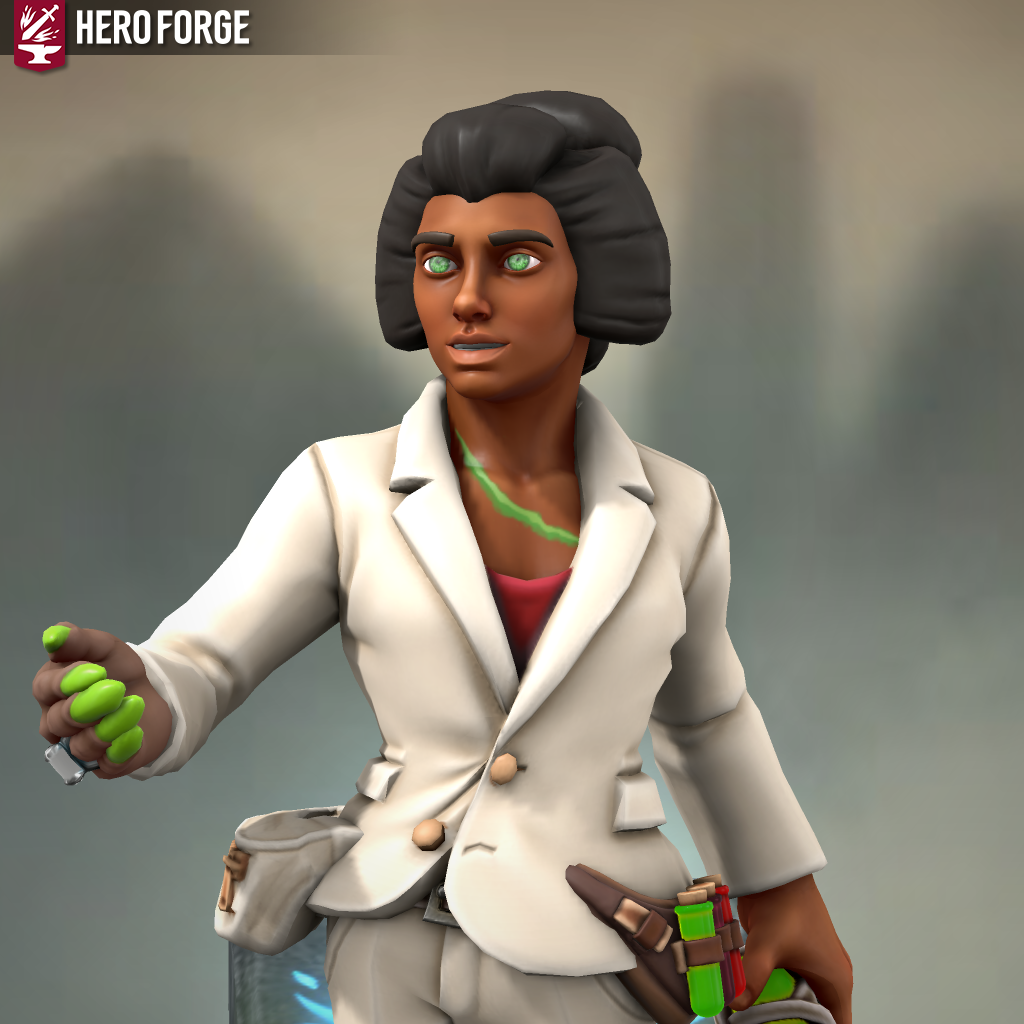Flora-Symbiotic Entity
Flora-Symbiotic Entities (short: FSEs) are humans that have been infused with plant-based alchemical substances and have obtained some plant-like qualities in the process. A former human is considered Flora-Symbiotic when their blood has taken on a green coloration, even though there are many other plant-based enhancements that can be made to a human, like bark skin or thorn claws. The process of transforming a human into an FSE is known as "floralization".
The first FSE in known history is Erika Rosenhand, whose transformation was a reaction to an accident in 17 BC. Now, in 0 AD, a few dozen FSEs roam in and around Saltor, all of whom (former) assistants and voluntary subjects of Erika Rosenhand. So far, all flora-symbiotic entities are former humans, although experimentation on other sapient species has recently begun.
Basic Information
Anatomy
Flora-symbiotic entities are generally slightly deformed in comparison to their human relatives, although the extend and nature of the deformation is rather individual. They also tend to be lighter and more slender. Additionally, there are a number of anatomic elements that set some FSEs apart from humans. The most common ones include:
- Green blood suffused with sap, which expedites wound closure and allows the body to store more nutrients in less weight
- Bark skin, which gives an additional layer of protection from external threats
- Thorn claws, offering a natural weapon as counteraction to the reduced weight of their fists
- Photosynthetic hair, which is able to transform sunlight and water into nutrients. FSEs with photosynthetic hair claim that sunlight "feels sweet, in the same way that honey tastes". This also allows some individuals to forgo traditional sustenance completely.
- Hydrophilic skin, which prevents loss of water and allows the individual to stay hydrated for longer
- Movable vines on various parts of the body, which work as additional limbs
- Poisonous or pheromonal spore-pods, which act as biological weapons or to soothe their fellows
Genetics and Reproduction
So far, all FSEs are capable of reproducing like humans normally do, and would produce regular human offspring. However, libido seems to be heavily reduced, which can turn the act of reproduction into just that, and nothing more.
Experimentation on plant-like sexual reproduction - including the availability of both ovules and pollen in the same individual - is ongoing, but to no avail so far. The same goes for asexual reproduction, the research into which is heavily tied in with research into cloning.
Civilization and Culture
Beauty Ideals
Most floral-symbiotic entities have an appearance that is similar enough to humans to be able to hide it. Yet, most try to present their special plant-like traits proudly and openly. Some of them believe that they are physically superior to humans, while others just want to show their willingness to be a part of technological progress. Whatever the reason may be, a proudly displayed patch of bark-skin, a green scar, or an elaborate hair-style that imitates palm leaves are sure to turn a lot of heads.
Interspecies Relations and Assumptions
As most FSEs stick to Saltor, the Capital of Progress, passersby usually regard them with respect and awe, as they are seen as an example of what humanity might achieve one day. Some non-human species also react with envy, however, as all FSEs that are known so far are former humans. Partially for that reason, Erika Rosenhand initiated further research into floralization of Fairies and Half-Giant. Research into the floralization of Elementals has been going on for a few years now, but to no satisfactory result.

Erika Rosenhand, Lady in Green by Kelban, created with Heroforge
Genetic Ancestor(s)
Lifespan
Unknown (>20 years)
Average Height
1.4 - 1.9 m (same as humans)
Average Weight
45 kg (identical between sexes)
Geographic Distribution
Discovered by
My skin is bark, my nails are thorns, but my bones are still potassium. My heart pumps sap, while my stomach still digests as it used to. Over the next couple of years, this will be the documentation of my transformation.
Remove these ads. Join the Worldbuilders Guild









That was really interesting! There seems to be a lot of experimentation and research and I was wondering... has anyone started doing research into different types of human-symbionts (with non-plant organisms)?
Also, as a note, it seems a tad weird that the average weight is identical between sexes, when it isn't in humans and they come from humans. Is there a reason for this?
There has been a significant amount of human-animal hybridization going on, yes! It's just not something I've written about yet. The existing human-animal-hybrids are roughly 60/20/20 natural, magical, and synthetic origin. As for the weight: The sap-blood makes it so most nutrients can be stored straight in the blood, requiring no fat-reserves anymore. Removing this necessity from the female body gives it the needed resources to build out muscle mass instead, bridging the gap between male and female average weight.
Neat, sounds like an interesting topic to read about (synthetic processes in general and how they apply to different species)!.
Fat is but one of the factors in weight differences. Height & (existing) muscle mass, for example, are two other important factors that make a difference between humans in our world. I mention existing muscle mass because starting from different points would still make a difference, all other factors being the same.
You're correct, height makes a difference, but not enough of one to make a statistically significant weight difference yet. That said, the statistic has a number of subjects n<100, due to the species being just 17 years old, so maybe weight differences between sexes will be noticed later down the line ;)
Fair enough!